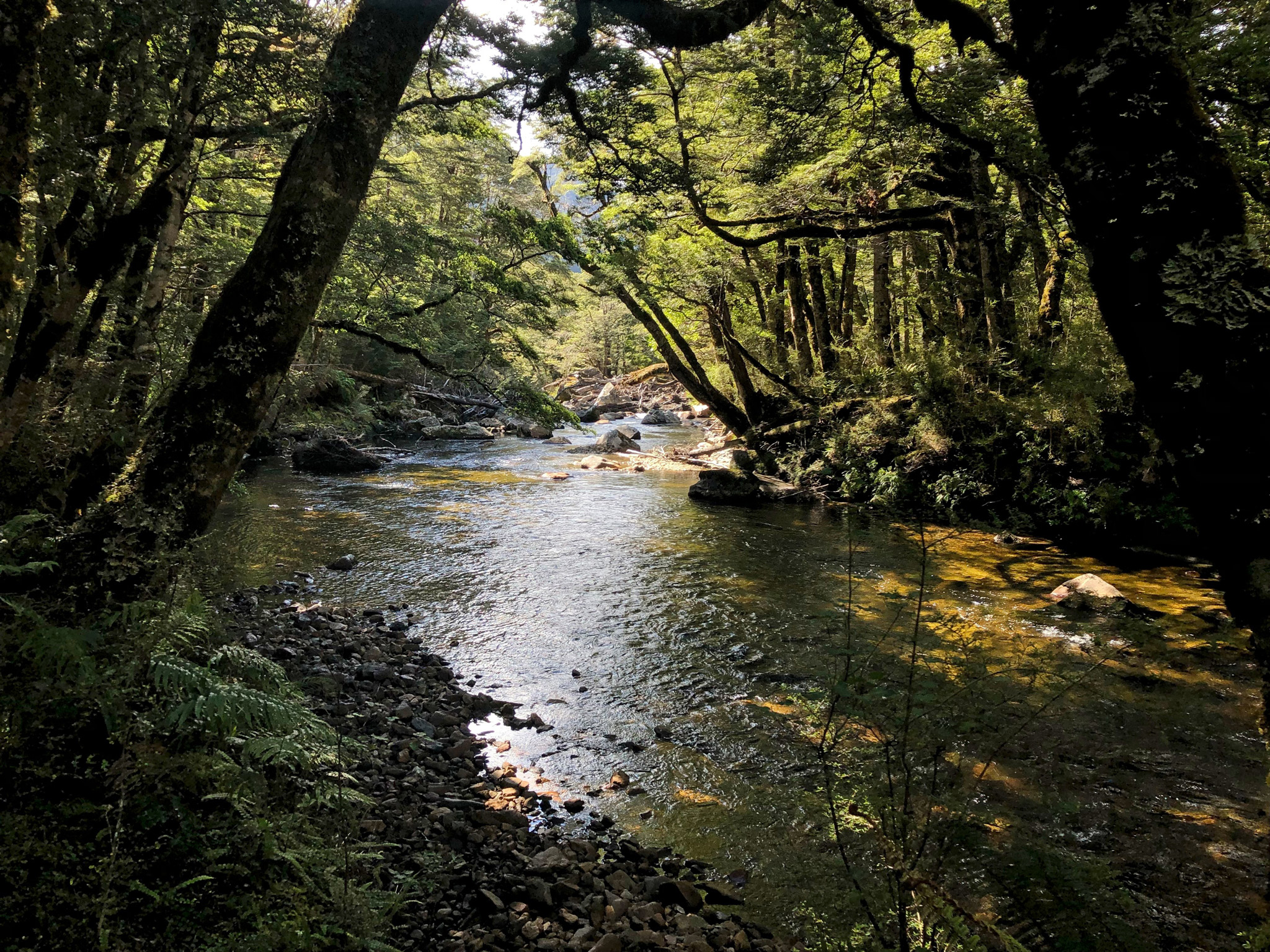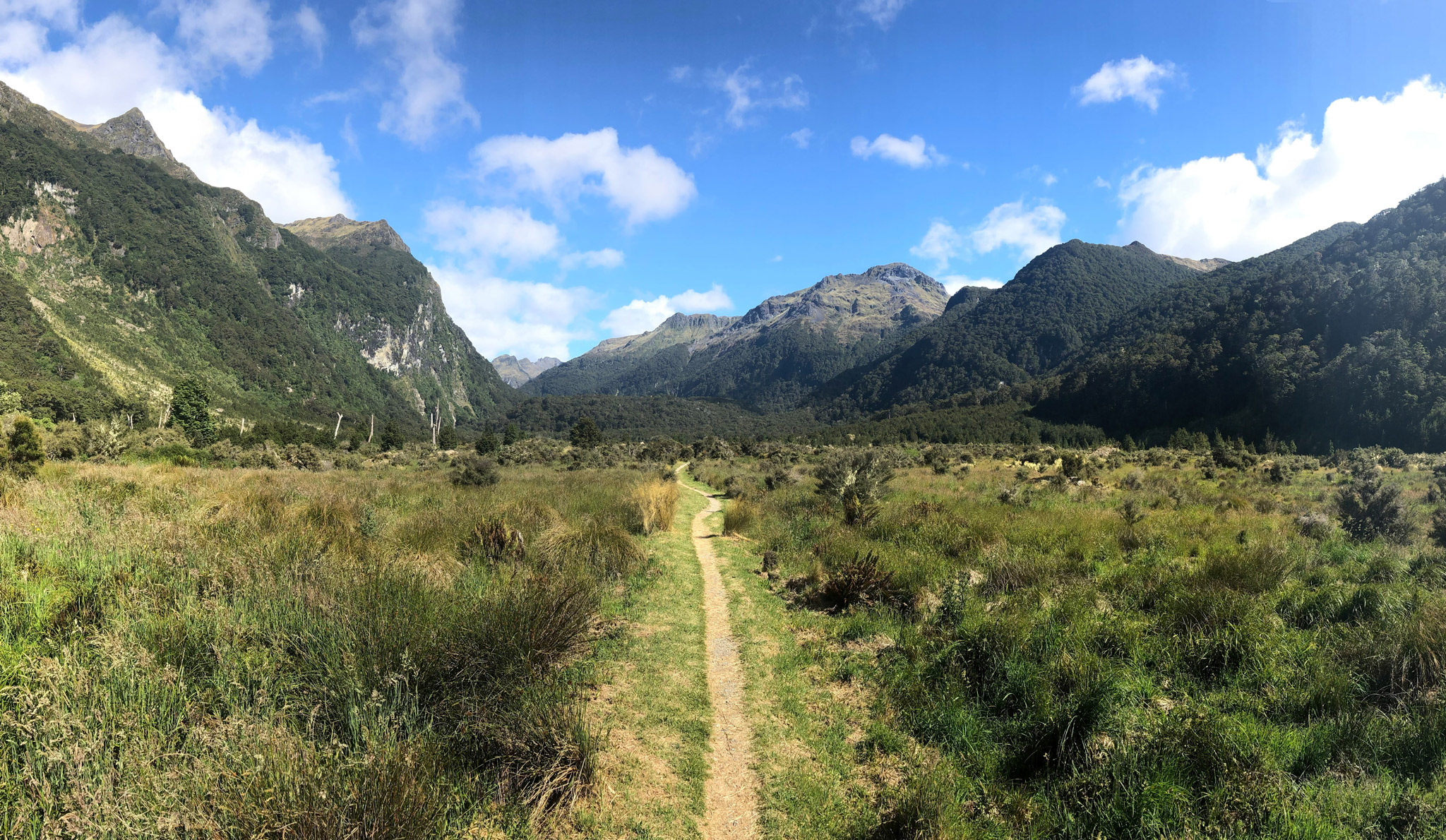Christmas last year was to be celebrated in Australia with my in-laws, who rented a home by the shores of Sydney’s northern beaches. Given the trek and expense of traveling down under, we always make the most of the journey to my husband’s homeland by planning an epic side-excursion as part of the visit.
This year’s detour included a hut-to-hut hike on one of New Zealand’s famed Great Walks. I had considered the Milford and Routeburn tracks but had my sights on the lesser-known Keplar Track, a 60 kilometer circular track in the Fiordland of New Zealand’s South Island.
I sat at my desk one afternoon that June, my fingers hovered over the keyboard in anticipation of the precise moment the New Zealand Department of Conservation would open the reservation site for the season in hopes of securing a permit for my desired hiking itinerary. My competition proved to be more proficient than I, forcing me to select alternate dates as my first and second choices filled up. In the end, I managed to book the route. I could hardly wait the six months until our hut-to-hut hiking adventure!

It was a blissful escape from Idaho’s frigid temps to the warmth of Australia’s summer sun. We spent the days following Christmas walking the shoreline trails, swimming and frequenting the cafes on Avoca and Terrigal beaches north of Sydney. Relaxed and suntanned, we were ready to embark on our adventure that started in Queenstown, New Zealand.
Queenstown is located on the shores of the South Island’s Lake Wakatipu with the dramatic Southern Alps as a backdrop. Queenstown, a mecca for thrill-seekers and outdoor enthusiasts, is known as the adventure capital of the world. Offering bungee jumping, rafting and jet-boating, hiking and skiing the slopes of The Remarkables, this lakeside town has something for every adventurer. We found ourselves in Queenstown for New Year’s Eve and soon realized why it was one of the premier places in the world to ring in the New Year. The fi reworks display over the lake was nothing short of spectacular, and we shared the experience with thousands of tourists and backpackers from around the globe.
The dawn of New Year’s came too soon as we boarded the bus for Te Anau, the gateway to New Zealand’s Fiordlands. In Te Anau, we perused the outdoor gear shops and armed ourselves with an all-natural bug repellant to serve as a defense against the bite of the New Zealand sandfly.
After checking in at the Fiordland National Park Visitor Center, we embarked on a boat shuttle that ferried us across Lake Te Anau to Brod Bay. Our trek began at deserted Brod Bay Beach, which is an inviting stretch of sand along the vast lake’s shore. Alone in paradise, we snapped pictures of the tranquil bay until the blood thirsty sandflies honed in on us and chased us off! The trail was soft and wound through a forest of ferns and beech trees. We climbed steadily up through the woods under the limestone bluffs until we finally reached the bush line. From the bush line, the trail led us along the ridge of tussock grasses overlooking the surrounding mountains and lake below.
We spent our first night in the Luxmore Hut, a bunkhouse with communal cooking stations. The Luxmore hut is perched atop the open ridge and gives one the feeling of being on top of the world.
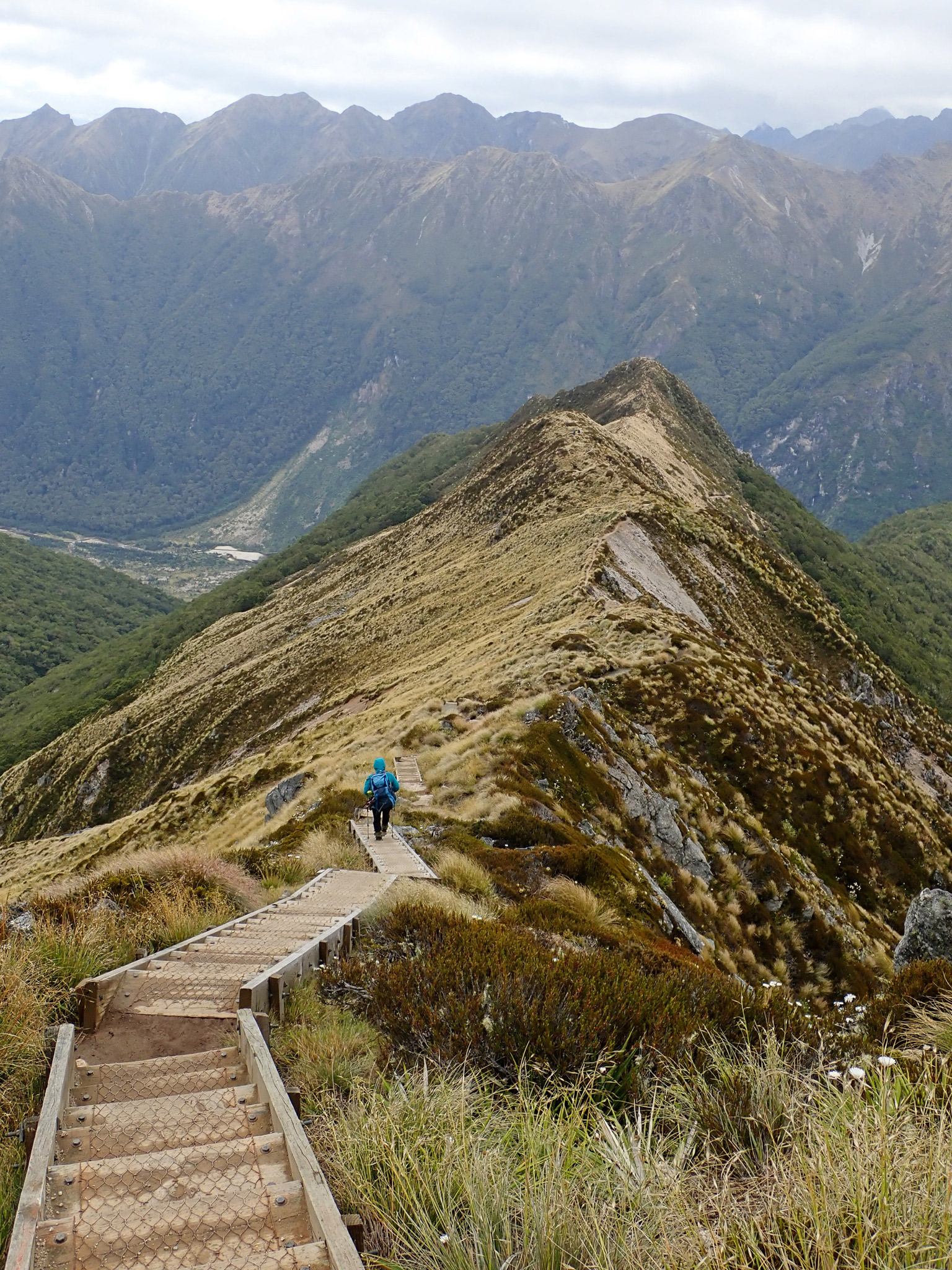
Strategically picking our bunks for the evening, we laid claim to our bed by situating our sleeping bag on the bunk then set out to explore. We headed out in light rain to the Luxemore caves, a short walk from the hut. To enter the cave, we climbed down a wooden ladder that seemed to swallow the light as we descended into the absolute darkness of the cave. The rock was slippery, and the absence of light was eerie as we explored the cave’s labyrinth. We ascended out of the cave to find that the moderate rain had yielded to a torrential downpour, a real test of whether our jackets would prove formidable shields against Fiordland’s weather. The enormous raindrops pelted down so hard it nearly hurt, and the sky grew ominous.
Safe in the hut, we prepared and ate dinner, then shared a flask of wine and played cards with a young group from England. We laughed and shared stories as the sky grew darker and the rumble of distant thunder filled the air. The wind whipped and howled and the lightning danced across the sky above the lake. We donned our earplugs, compulsory apparel for bunkhouse slumber, and drifted off to sleep only to be awakened at 2 a.m. by the smoke alarm. No one in the 54 bunk sleeping hall moved. Granted, there was no smoke, but it was still unusual that none of the weary hikers could muster the energy to move. We heard whispers, but no one ventured out of the bunk room to see whether there was, in fact, a fire. No one investigated the first time the alarm went off, nor the second time 10 minutes later. By the third time the smoke alarm sirened, I began to wonder if it was a carbon monoxide alarm given all the people sleeping in the bunkhouse with the windows closed due to the storm. Lighting the way with my trusty headlamp, I crept down to the communal kitchen and watched the storm from the room’s large picture windows. The wind was reported to be one sustained at 100 kilometers per hour with gusts over 120 kilometers per hour. I surmised that the glass must have been tempered to sustain the walloping wind gusts that shook the walls and made the entire hut shutter. I watched the storm alone in silence for hours from my perch on top of the world before nodding off on the hard wooden bench in the cooking facility.
The next morning, the storm had settled into a tolerable driving rain, and the wind subsided to 65 kilometers per hour. We fueled up with a stick-to-your-ribs bowl of oatmeal, slid our backpacks on, and set our sights on our next destination, the Iris Burn Hut.
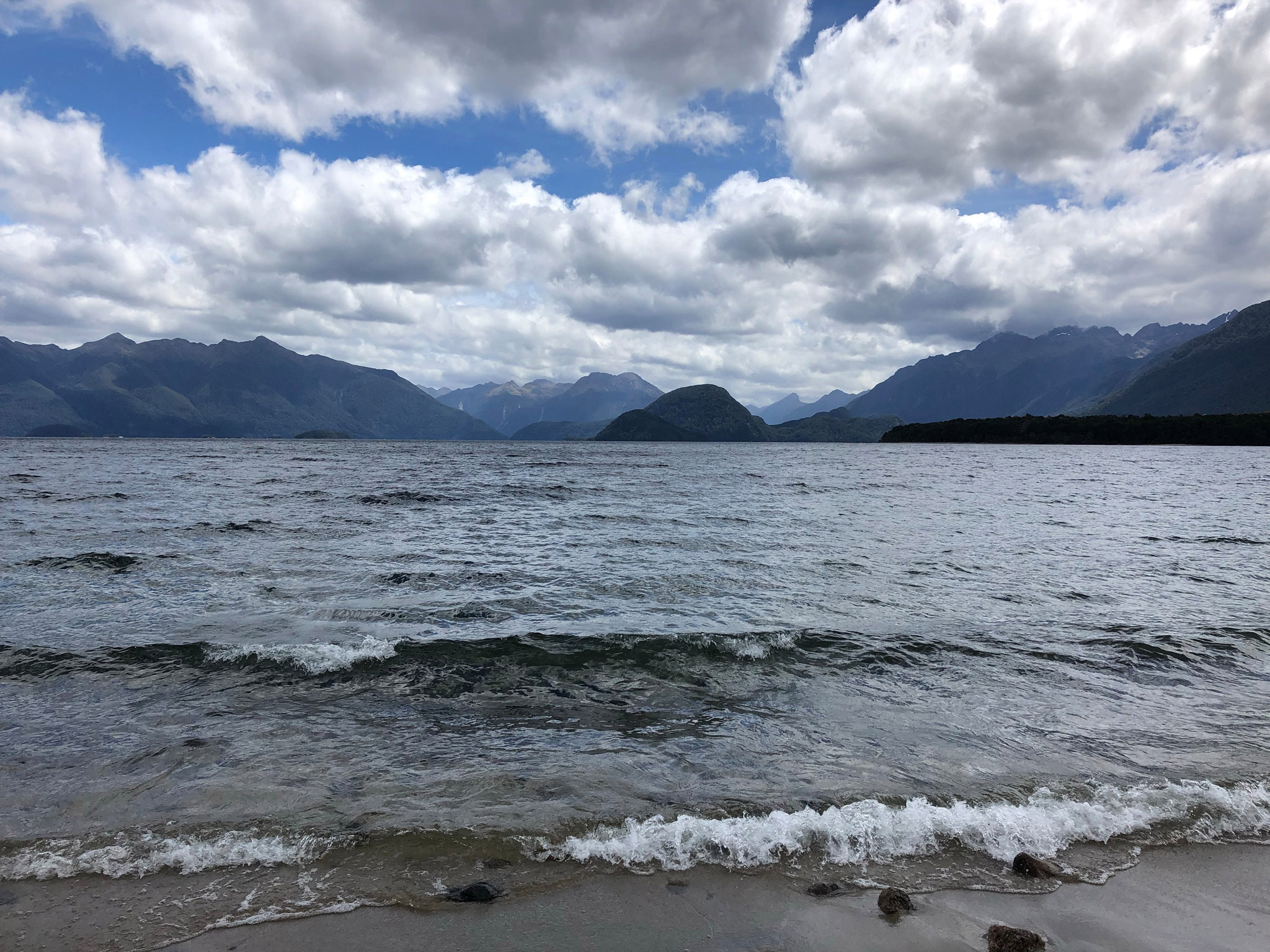
Hiking atop the ridge in the rushing wind, with 360-degree views of snow-capped mountains and the magnificent lake below, I doubted I had ever been happier than on this morning. The undulating trail laid out in front of me through the open fiords, and the only audible sound was the whipping wind’s howl.
We stopped for a snack at an emergency shelter and photographed the resident Kea, a native olive-grey colored forest parrot. Kea birds are crafty and they were aggressively begging for hikers’ food. We thought we were safe from the devious and thieving parrots by sitting on a wooden deck at the shelter’s entry. A few minutes into our picnic, I noticed that my bag of trail mix was emptying quicker than I was eating it. The zipper lock bag was sitting on the deck that hovered a few inches above the ground. The crafty Kea had created access holes dug under the deck. While one bird pestered my husband and demanded our attention, another had pecked holes in our snack back from under the decking! We laughed at how the Kea used teamwork to pull off their plot, packed up, headed down the trail, and left the annoying but rare forest parrots behind.
It was with mixed feelings that we followed the trail down below the tree line back into the beech forest as we neared the Iris Burn Hut. The seemingly famished mosquitos eagerly greeted us when we arrived at the 50 bunk hut in the valley beside a lazy river. At 15 kilometers with vertical gains and losses, the day’s hike was the most challenging of the trek. Our legs protested, but we coerced them into hiking 20 minutes into the valley to the thundering Iris Burn Falls. It rained on us on the walk back from the falls, but when we reached the hut, the rain ceased, and a spectacular rainbow spanned the valley above the hut. With colors distinct and vivid, the rainbow beckoned all of the hikers out from the hut to behold such an extraordinary sight. The day’s adventure, from start to fi nish, was the best I could ever remember.
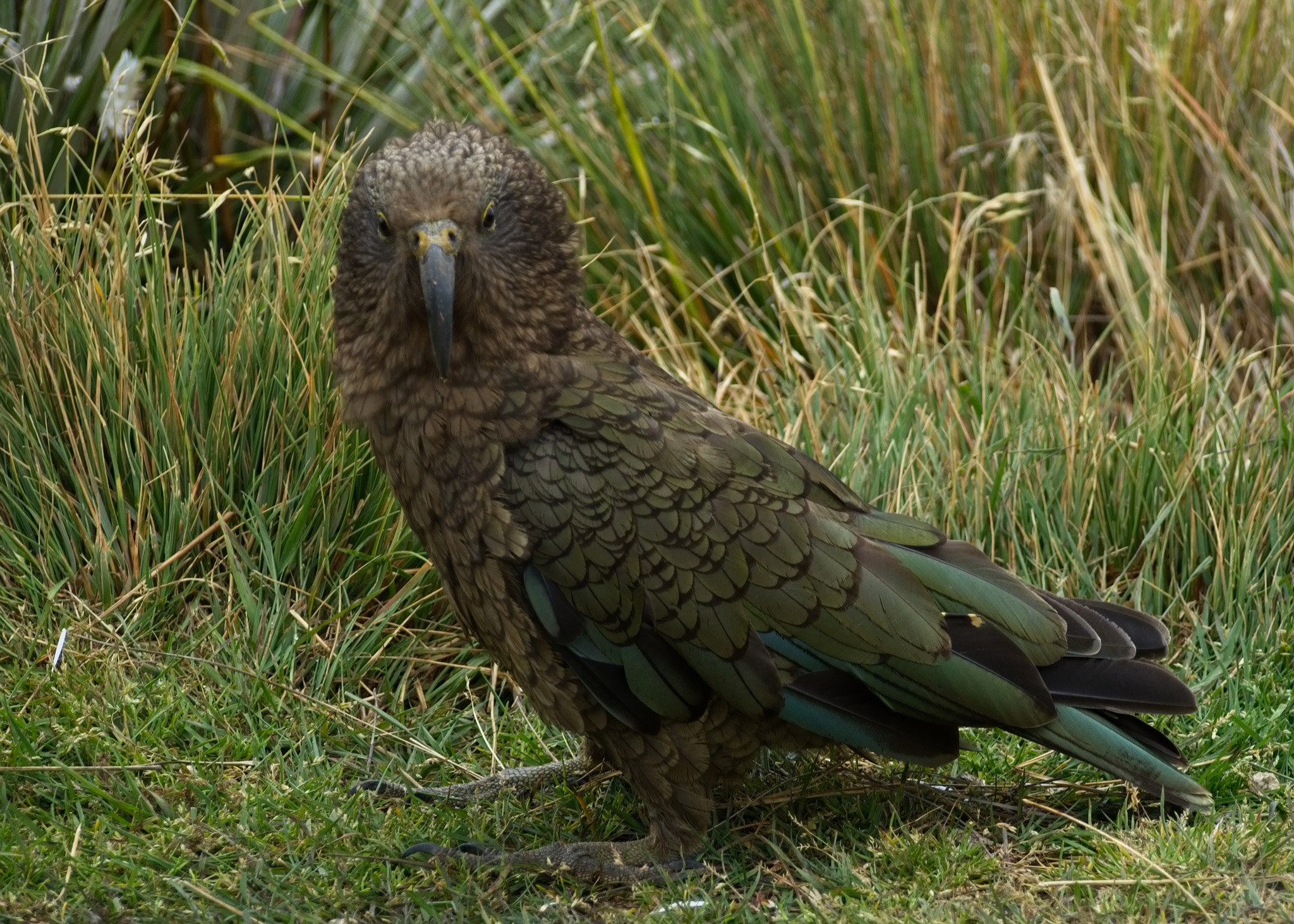
Day three on the Keplar track led us from the Iris Burn hut to Moturau Hut, a beachfront hut on the sandy shores of Lake Manapouri. We walked an easy 18 kilometers through the ferns and beech trees in the valley that lead to the lake. Upon arrival at the Moturau Hut, the lake summoned us to play in the waves that were crashing on the beach. While we didn’t carry swimsuits in our packs, we were the only humans on the beach, so we swam sans clothes in the refreshingly chilly water that was the most stunningly beautiful body of water I have ever set eyes on. After our swim, I threw caution to the wind and neglected to apply more bug repellant. After all, I hadn’t sustained any bites thus far on the journey so perhaps the dreaded sandflies didn’t pose such a risk.
The next morning I awoke, and scratched, and scratched and scratched at the wrath the sandflies had inflicted on me the evening before. Although futile at this point, I applied a layer of bug repellant before setting out for our final walk of the trek. The morning’s walk was a gentle stroll of an hour and a half long through beech forest along the Waiau River to the control gates that regulate the lake level. We walked the footpath atop the control gate and found the car park for the Keplar Track. Unsure about the shuttle system and how long we would have to catch one, we were delighted when a local woman offered us a lift to Te Anau. We had a few hours before our bus to Queenstown arrived, so we devoured meat pies as if we were famished and chased the pies down with a cold beer. We happened upon the Fiordland Theatre and watched an incredible film, Ata Whenua (Shadowland), which showcased the Fiordland from the air, utilizing extraordinary helicopter footage. As it turns out, the owner of this modern-chic cinema is a renowned helicopter pilot.
It seemed a long ride back to our hub in Queenstown because the bus driver negotiated the winding road at speeds often double the legal limit. I nervously pondered whether he was inebriated or simply in a rush, and was thankful when we arrived safely in Queenstown, where we spent the next four nights.
At last, our holiday came to a close. On the lengthy plane ride back to the states, I didn’t pass the time reading or watching movies. I was planning my next hiking trip in New Zealand… and scratching my souvenir sandfly bites!
Cheers! N
By Denise Lundy
Photography By David Ronalds
